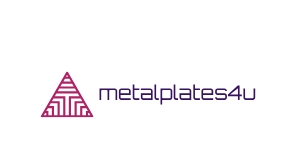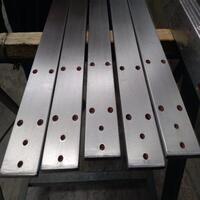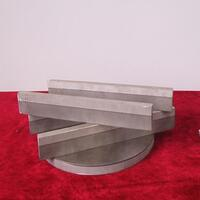1. Introduction
Metal clad is a term that spans multiple industries, from construction and architecture to electrical engineering and metallurgy. At its core, the metal clad meaning refers to a composite material or structure where one metal is bonded—mechanically, metallurgically, or through electroplating—to another for enhanced performance, aesthetics, or cost-efficiency. Whether you’re considering a metal clad house with a corten steel facade or specifying metal clad electrical wire for a commercial project, understanding the breadth of this concept is essential.

2. What Is Clad Metal Meaning?
The clad metal meaning describes a layered material composed of two or more metals fused together. This process retains the beneficial properties of each constituent—such as the corrosion resistance of stainless steel and the strength of carbon steel—while reducing overall cost. Common examples include aluminum clad stainless steel, stainless clad aluminum, and copper nickel clad. These clad metals are widely used in aerospace, chemical processing, and marine environments due to their tailored performance characteristics.
- Alloy clad variants like 2024 T3 clad and 7075 T6 clad are standard in aircraft manufacturing.
- Electroplating techniques, including chromium electroplating and electroless nickel, are also forms of cladding used for surface enhancement.
3. Architectural Applications of Metal Clad
In modern architecture, metal clad systems dominate sustainable and high-performance building design. A metal clad building often features durable, low-maintenance exteriors that combine visual appeal with structural resilience.
3.1 Metal Clad Walls and Facades
Metal clad wall systems offer versatility in texture and finish. Popular choices include corrugated steel facade panels, vertical standing seam metal siding, and zinc metal siding. The corten steel siding trend has surged due to its weathering properties and rustic aesthetic, though corten siding cost remains higher than conventional options. Similarly, a zinc facade or copper siding provides longevity and develops a distinctive patina over time.
3.2 Metal Clad Roofs

Metal clad roof installations are prized for energy efficiency and lifespan. Systems like colorbond standing seam and pac clad standing seam roof deliver seamless, watertight coverage. Zinc clad roofs and pac clad hwp (high-wind performance) variants are ideal for coastal or high-exposure zones. Accessories such as pac clad coping and pac clad column covers ensure cohesive design and protection.
3.3 Residential Uses
Homeowners increasingly opt for a steel clad house or metal clad shed for durability and modern styling. Exterior corrugated metal siding and metal weatherboard mimic traditional profiles while offering superior resistance to pests, fire, and moisture. A zinc clad dormer adds architectural interest without compromising performance.
4. Industrial and Engineering Uses
Beyond buildings, metal clad technology plays a critical role in infrastructure and manufacturing.
4.1 Piping and Insulation
Aluminum clad pipe insulation is common in HVAC and industrial piping to prevent condensation and improve thermal efficiency. The aluminum clad sheet or aluminium clad sheet acts as a vapor barrier while resisting corrosion.
4.2 Electrical Systems

Metal clad electrical wire—often referred to as MC cable—is armored for safety in commercial and industrial settings. Aluminum clad steel wire and cu clad wire are engineered for conductivity and mechanical protection. In Pennsylvania and other jurisdictions, metal clad wire can be used in commercial buildings when compliant with local electrical codes.
4.3 Structural Components
Steel plate applications abound in heavy construction. Options range from mild steel plate and boiler plate steel to specialized alloys like 4140 steel plate or inconel 718 plate. Thicknesses such as 1/8 inch steel plate, 3/16 steel plate, and thick steel plate serve different load-bearing needs. Diamond plate steel and aluminum diamond tread plate add slip resistance for platforms and walkways.
5. Material Varieties and Specifications
The market offers a vast array of clad and solid metal products. Stainless steel plate grades—including 304L, 316, and 904L—are selected based on corrosion demands. Aluminum alloy plates like 6061 T6 aluminum plate and 5052 aluminum plate balance strength and weight. Specialty items include titanium plate, bronze plate, and nickel sulfamate-plated components for extreme environments.
- Perforated plate and metal plate with holes serve filtration and acoustic functions.
- Stainless steel diamond plate and aluminium checker plate are widely available for sale near fabrication hubs.
6. Cost and Practical Considerations
While premium finishes like corten steel siding cost more upfront, their minimal maintenance offsets long-term expenses. Steel plate price fluctuates with market demand, but sourcing from reputable stainless steel plate distributors ensures quality. For DIY projects, aluminum sheet for sale or steel plate near me options provide accessible entry points.
7. Conclusion
From the sleek lines of a standing seam facade to the rugged reliability of metal clad wire, the applications of metal clad systems are both extensive and evolving. Understanding the metal clad type best suited for your project—whether it’s a steel clad inc venture, a residential metal clad house, or an alloy clad industrial component—ensures optimal performance, aesthetics, and value. As innovation continues in materials like titanium clad and inconel weld overlay, metal clad remains a cornerstone of modern engineering and design.
Our Website founded on October 17, 2012, is a high-tech enterprise committed to the research and development, production, processing, sales and technical services of ceramic relative materials such as 10. Our products includes but not limited to Boron Carbide Ceramic Products, Boron Nitride Ceramic Products, Silicon Carbide Ceramic Products, Silicon Nitride Ceramic Products, Zirconium Dioxide Ceramic Products, etc. If you are interested, please feel free to contact us.
